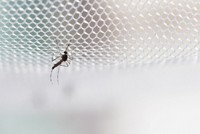Advertisement
Grab your lab coat. Let's get started
Welcome!
Welcome!
Create an account below to get 6 C&EN articles per month, receive newsletters and more - all free.
It seems this is your first time logging in online. Please enter the following information to continue.
As an ACS member you automatically get access to this site. All we need is few more details to create your reading experience.
Not you? Sign in with a different account.
Not you? Sign in with a different account.
ERROR 1
ERROR 1
ERROR 2
ERROR 2
ERROR 2
ERROR 2
ERROR 2
Password and Confirm password must match.
If you have an ACS member number, please enter it here so we can link this account to your membership. (optional)
ERROR 2
ACS values your privacy. By submitting your information, you are gaining access to C&EN and subscribing to our weekly newsletter. We use the information you provide to make your reading experience better, and we will never sell your data to third party members.
Biological Chemistry
Newscripts
Real-time traffic routing, Good eats, The fight against tooth decay
by Marc S. Reisch
September 11, 2006
| A version of this story appeared in
Volume 84, Issue 37
Real-time traffic routing
Just about anyone who drives a car likes to get where they are going with the least amount of traffic. Radio news reports can provide some clues to traffic tight spots, but in major metropolitan areas, the reports just don't provide enough information to keep people moving happily on their way.
Enter IntelliOne, an Atlanta-based company that has found a way to harness cell phones to help locate traffic snarls. Using cell phone positioning cues-untraced signals all cell phones produce, whether in use or not, as they seek towers with the strongest signals-the firm's engineers produce an illuminated traffic map that identifies congestion in real time.
"Unlike sensors and other equipment along major freeways that are expensive and take years to deploy, our system takes advantage of existing cellular networks in which wireless carriers have already invested billions of dollars," says IntelliOne CEO Ron Herman, an engineer and computer scientist. Because of its potential to aid not just daily commuters but also truckers who need to make on-time deliveries and emergency responders who need to know where an accident is, IntelliOne has received a grant from the National Science Foundation's Small Business Innovation Research program.
The firm calls its software system based on cell phone signals TrafficAid. It first uses the cell phone signals to determine phone locations and then matches those signals to roads. The signals are monitored for average speed and travel times for all roads with cell coverage. A two-week mid-August test of the system in Florida showed that TrafficAid accurately represented traffic speeds to within 3 to 5 mph at any given location.
Next on IntelliOne's agenda, says Herman, is working out deals with wireless carriers.
Good eats
Many will use the time stuck in traffic to snack until IntelliOne makes it possible to speed commuters on their way. Some might want to make a quick stop at a convenience store to pick up a Twinkie—a prepackaged, inexpensive, cream-filled finger of golden sponge cake.
However, it turns out that Twinkies are not just good eats in their own right. Twinkie maker Interstate Bakeries has found a number of creative ways to serve up this popular snack and compiled some 50 possibilities in the newly published "The Twinkies Cookbook: An Inventive and Unexpected Recipe Collection" (Berkeley, Calif.: Ten Speed Press, $12.95).
To honor the 75th anniversary of the golden confection, the cookbook recipes include "novelties" such as Twinkie Sushi, Twinkie Pancakes, and French Twinkies. Chocolate lovers may satisfy themselves with Fried Twinkies with Chocolate Sauce, Twinkie Burritos, and Chocolate Twinkie Pops. And to wash it all down, the cookbook suggests concoctions such as Twinkie Milkshakes and Twinkie Love Potion Number 75.
The fight against tooth decay
A sweet tooth can quickly lead totooth decay. Late last year, Newscripts took note of U.S. Army researchers' efforts to develop a chewing gum that harnessed a protein fragment known as KSL to kill harmful mouth bacteria (C&EN, Dec. 5, 2005, page 80). BASF scientists think that lactobacilli bacteria, found in yogurt, can do the trick as well.
Certain lactobacilli "effectively bind" to the cavity-causing bacterium, Streptococcus mutans, "and prevent them from adhering to the surface of the teeth," says Andreas Reindl, project leader at BASF's future business unit. Left to its own devices, S. mutans colonizes the surface of the teeth, where it converts sugar into aggressive acids that break down tooth enamel. Reindl expects oral hygiene products containing the probiotic lactobacilli to be on the market next year.
In fact, lactobacilli have a fine career ahead of them at BASF. Together with OrganoBalance, a company that specializes in developing and screening microbial strains, BASF hopes to ferment and sell specialized strains to customers. Promising applications include the development of specific lactobacilli that promote regeneration of the skin's protective microbial flora and prevent body odor.






Join the conversation
Contact the reporter
Submit a Letter to the Editor for publication
Engage with us on Twitter